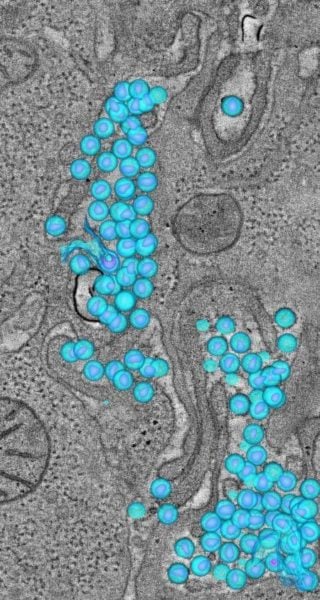An NIH-led team of scientists has discovered a new vulnerability in the armor of HIV that a vaccine, other preventive regimen or treatment could exploit. The site straddles two proteins, gp41 and gp120, that jut out of the virus and augments other known places where broadly neutralizing antibodies (bNAbs) bind to HIV. This newly identified site on the viral spike is where a new antibody found by the scientists in an HIV-infected person binds to the virus. Called 35O22, the antibody prevents 62 percent of known HIV strains from infecting cells in the laboratory and is extremely potent, meaning even a relatively small amount of it can neutralize the virus.
Following their discoveries, the scientists found that 35O22-like antibodies were common in a group of HIV-infected people whose blood contained antibodies that potently neutralized a broad array of HIV strains. According to the researchers, this suggests that it might be easier for a vaccine to elicit 35O22 than some other known bNAbs, which are less common.
Since 35O22 binds only to forms of the viral spike that closely resemble those that naturally appear on HIV, the scientists believe a vaccine that elicits 35O22-like antibodies would need to mimic the natural shape of the spike as closely as possible. This would require a different approach than that used in many previous experimental HIV vaccines, which have included just parts of the viral spike rather than a structure that looks like the entire native viral spike.
In addition, the researchers report, the HIV strains that 35O22 neutralizes complement strains neutralized by other bNAbs. This suggests that eliciting or combining 35O22 with a few other bNAbs in a vaccine or a prevention or treatment regimen could likely neutralize the vast majority of HIV strains found around the globe, according to the scientists.

